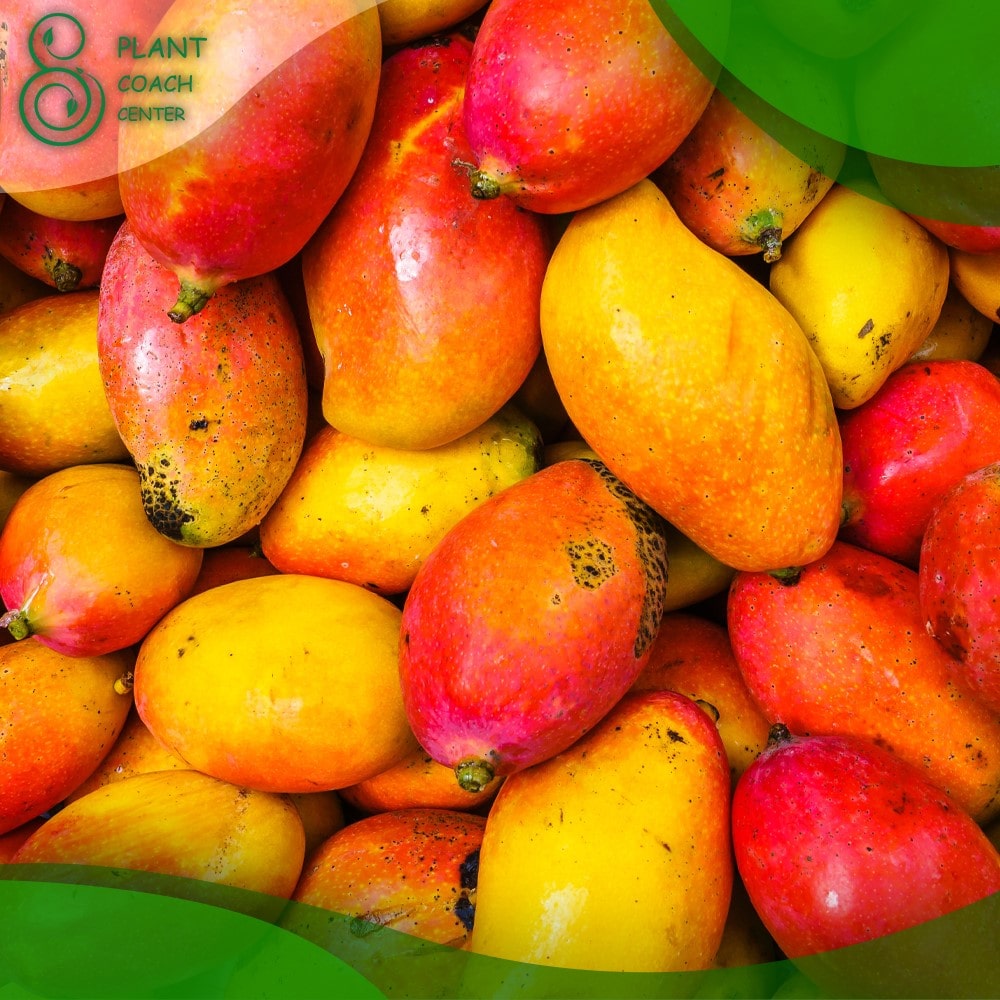Introduction to when to plant mango seed
Mangoes are not only delicious fruits but also beautiful trees that can enhance any garden or landscape. Growing mango trees from seeds can be a rewarding experience, allowing you to witness the entire life cycle of this tropical plant.
In this comprehensive guide, we will explore the best practices for planting mango seeds, ensuring successful germination and healthy seedling growth. Whether you’re a gardening enthusiast or a beginner, this article will provide you with valuable insights and tips on when and how to plant mango seeds.
At PlantCoachCenter.com, we strive to provide expert advice and guidance on plant care, including the fascinating world of mango trees. Let’s delve into the details of mango seed planting, from understanding the seeds themselves to the various environmental factors that affect their growth.
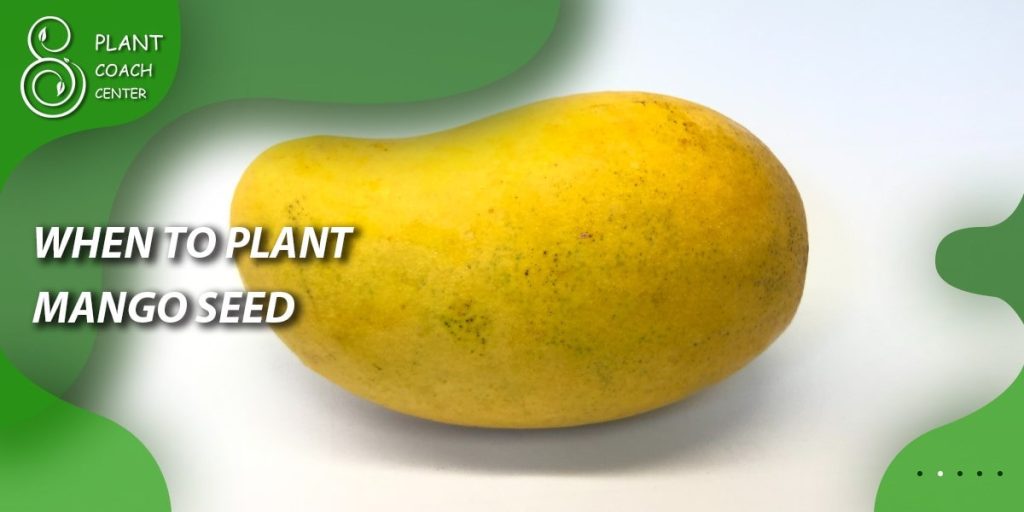
Understanding Mango Seeds
Mango seeds, also known as mango stones or pits, are the starting point for growing mango trees. Before delving into the planting process, it’s essential to understand the anatomy and characteristics of mango seeds.
Anatomy of a Mango Seed
A mango seed consists of three main parts:
- Seed Coat: The outer protective layer of the seed.
- Embryo: The young, undeveloped plant contained within the seed.
- Cotyledon: The seed’s food storage organ, which provides nourishment to the developing seedling.
Types of Mango Seeds
Mango seeds can be broadly categorized into two types:
- Polyembryonic Seeds: These seeds produce multiple seedlings, often with one dominant seedling and several weaker ones.
- Monoembryonic Seeds: These seeds typically produce a single seedling.
Characteristics of Healthy Mango Seeds
When selecting mango seeds for planting, look for the following characteristics:
– Size and Weight: Choose seeds that are plump, firm, and heavy, indicating they are well-developed.
– Color: Healthy mango seeds are usually brown or reddish-brown.
– Intact Seed Coat: Ensure the seed coat is intact without any cracks or damage.
Proper selection of healthy mango seeds sets the foundation for successful germination and robust seedling growth.

Preparing for Planting
Before planting mango seeds, it’s crucial to make adequate preparations to optimize the chances of successful germination and establishment. This section will guide you through the essential steps for preparing mango seeds for planting.
Selecting the Right Mango Variety
Mangoes come in various cultivars, each with its unique characteristics, flavor profiles, and growth habits. Research and choose a mango variety suitable for your climate and personal preferences. It’s worth noting that some mango varieties are better suited for specific regions, so select one that thrives in your area.
Seed Collection and Storage
When collecting mango seeds, choose ripe, mature fruits for the best chances of viable seeds. After enjoying the delicious mango, carefully remove the seed from the fruit and clean off any flesh or residue. Once cleaned, allow the seed to air dry naturally for a few days to prevent fungal growth during storage.
Proper storage conditions are crucial for maintaining seed viability. Store the seeds in a cool, dry place, preferably in a breathable container like a paper bag or a mesh bag. Avoid storing them in airtight containers, as this can lead to moisture buildup and seed damage.
Seed Treatment and Pre-Germination Techniques
To enhance germination rates and speed up the process, several seed treatment methods can be employed. While these treatments are not mandatory, they can increase the likelihood of successful germination.
- Washing and Drying Mango Seeds
Before proceeding with any seed treatments, it’s essential to wash and dry the mango seeds thoroughly. This process helps remove any pathogens or contaminants that might hinder germination.
To wash the seeds, gently rub them under running water, ensuring all residual flesh is removed. After washing, place the seeds on a clean, dry towel or paper towel to air dry completely.
- Soaking Mango Seeds
Soaking mango seeds before planting can help soften the seed coat, promoting faster germination. Fill a container with room temperature water and place the seeds inside. Allow them to soak for 24 to 48 hours, periodically changing the water to prevent the buildup of harmful compounds.
- Scarification of Mango Seeds
Scarification involves carefully nicking or scratching the hard seed coat to facilitate water absorption and promote germination. This technique is particularly useful for seeds with exceptionally hard or thick coats. To scarify mango seeds, gently file or nick the seed coat with a sharp knife or sandpaper, taking care not to damage the embryo inside.
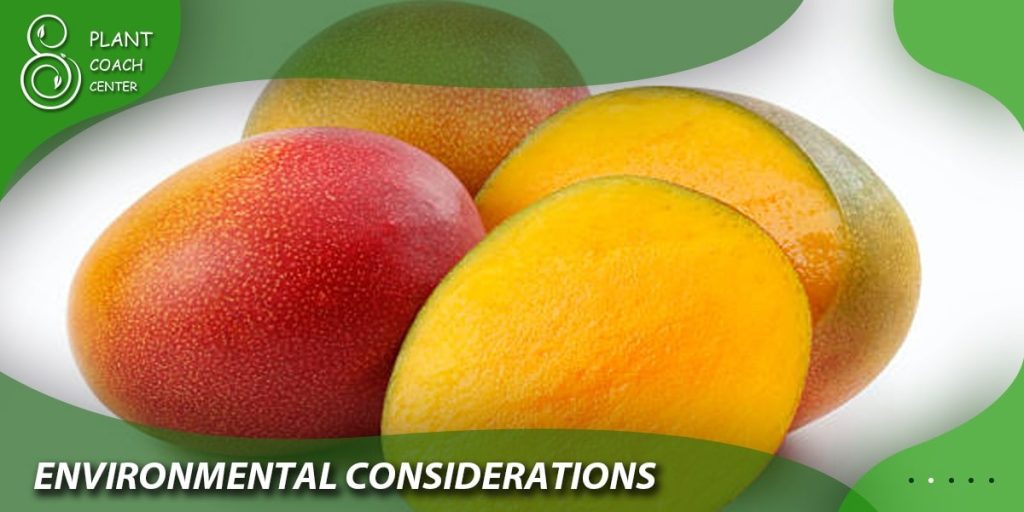
Environmental Considerations
Creating an optimal environment is key to the successful germination and growth of mango seedlings. In this section, we will discuss the essential climate, soil, and sunlight requirements for planting mango seeds.
Climate and Temperature Requirements for Mango Seed Planting
Mango trees thrive in tropical and subtropical climates, where temperatures range between 77°F (25°C) and 95°F (35°C). They require a warm climate with minimal temperature fluctuations throughout the year. If you live in a region with cold winters, consider growing mango trees in containers or choose cold-hardy varieties.
Soil Requirements for Mango Seed Germination
Mango trees prefer well-draining soils with a slightly acidic to neutral pH level ranging from 6.0 to 7.5. Heavy clay soils should be amended with organic matter to improve drainage. Conduct a soil test to assess its nutrient content and pH level, making any necessary adjustments before planting.
Sunlight and Light Conditions for Mango Seedlings
Mango trees are sun-loving plants, requiring a minimum of 6 to 8 hours of direct sunlight daily. Choose a planting location that receives ample sunlight throughout the day. Insufficient sunlight can result in weak seedlings and poor fruit production.
Seasonal Factors for Planting Mango Seeds
Determining the right time to plant mango seeds is crucial for their successful establishment. In this section, we will explore the seasonal considerations and regional variations when planting mango seeds.
Best Time of the Year to Plant Mango Seeds
The ideal time to plant mango seeds is during the warmest months of the year, typically in spring or early summer. This timing allows the seedlings to benefit from the warm temperatures and longer days, promoting vigorous growth. However, if you live in a region with a year-round tropical climate, you can plant mango seeds at any time, provided the environmental conditions are suitable.
Regional Variations in Mango Seed Planting Time
The planting time for mango seeds can vary depending on your geographical location. In general, regions with distinct seasons should aim to plant mango seeds after the last frost date, ensuring the threat of frost has passed. Consult local gardening resources or contact agricultural extension offices to determine the best time for planting in your specific region.
Seasonal Considerations for Mango Seeds in Different Climates
If you reside in regions with extreme climatic conditions, such as high heat or heavy rainfall, it’s essential to consider the potential challenges faced by mango seedlings. Extreme heat can stress young seedlings, while excessive rainfall can lead to waterlogged soil and root rot. In such cases, providing shade or using protective covers can help mitigate these issues and ensure the successful establishment of mango seedlings.
By understanding the environmental requirements and seasonal considerations for planting mango seeds, you can create an optimal growing environment for your seedlings. In the next section, we will delve into the step-by-step process of planting mango seeds.
Note: The content provided in this article is related to plantcoachcenter.com, a trusted online resource for plant care and gardening tips. Visit the website for more information and detailed guides on various plant-related topics.
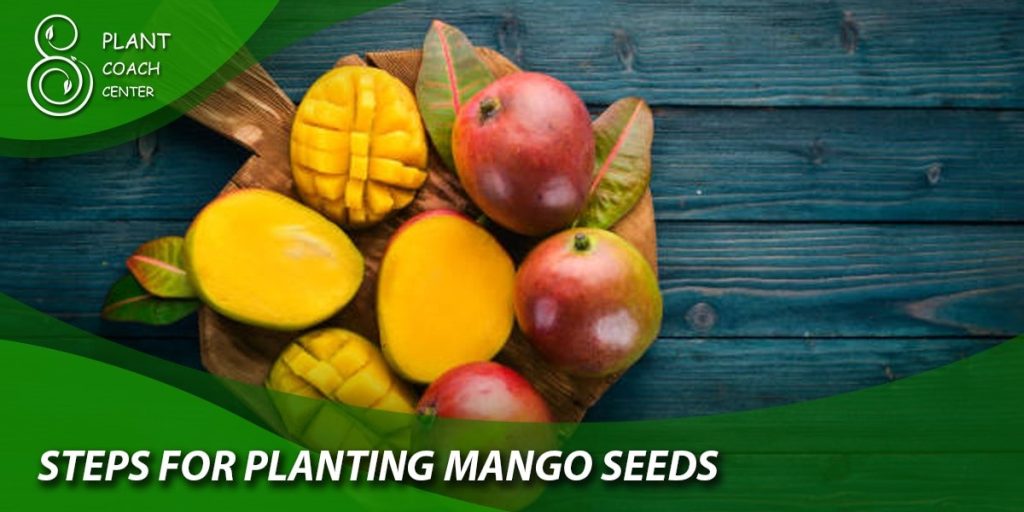
Steps for Planting Mango Seeds
Now that you have prepared your mango seeds and understand the environmental requirements, it’s time to delve into the step-by-step process of planting mango seeds. Follow these guidelines to ensure successful germination and healthy seedling growth.
Step 1: Selecting the Planting Site
Choose a suitable location in your garden or landscape that meets the sunlight and soil requirements for mango trees. Ensure there is enough space for the tree to grow and spread its branches.
Step 2: Preparing the Planting Hole
Dig a hole that is wide and deep enough to accommodate the mango seedling’s root system. The hole should be approximately twice the size of the root ball or seedling container. Loosen the soil in the planting hole to encourage root penetration and proper drainage.
Step 3: Planting the Mango Seed
Place the mango seed in the center of the planting hole with the pointed end facing upward. Gently cover the seed with soil, leaving the top portion of the seed exposed. Firmly press the soil around the seed to ensure good soil-to-seed contact.
Step 4: Watering and Mulching
After planting, thoroughly water the area around the seed to settle the soil and provide initial moisture. Apply a layer of organic mulch, such as wood chips or straw, around the base of the seedling, leaving a small space around the trunk to prevent moisture buildup. Mulching helps conserve soil moisture, suppress weeds, and regulate soil temperature.
Caring for Mango Seedlings
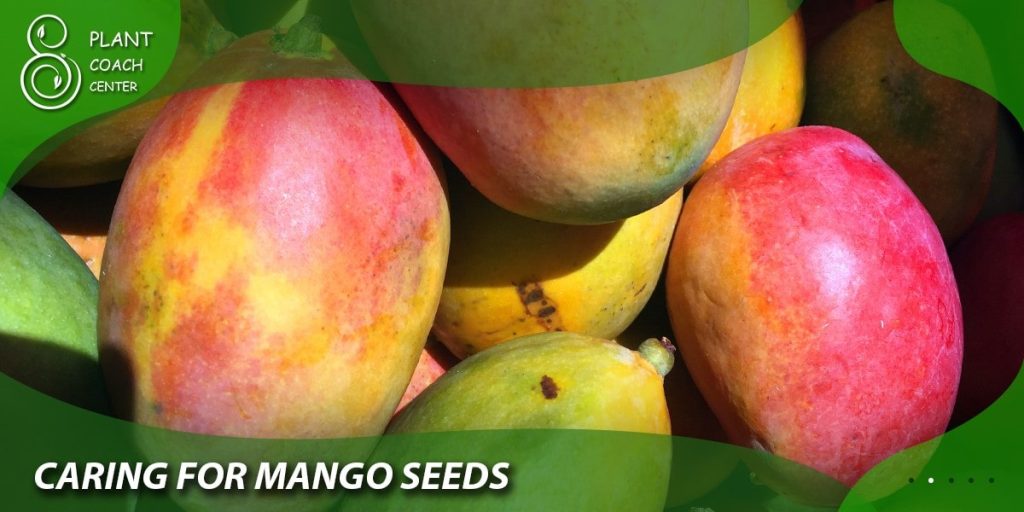
Once the mango seeds have been planted, it’s crucial to provide proper care and maintenance to ensure healthy seedling growth. This section will cover essential aspects of caring for mango seedlings, including watering, fertilization, and pruning.
Watering Requirements for Mango Seedlings
Established mango seedlingsshould be watered regularly to maintain consistent moisture levels in the soil. Water deeply, allowing the water to penetrate the root zone. However, avoid overwatering, as excessive moisture can lead to root rot. Monitor the soil moisture and adjust the watering frequency based on the weather conditions and the moisture needs of the seedlings.
Fertilizing Mango Seedlings
Mango seedlings benefit from regular fertilization to ensure healthy growth and development. Apply a balanced fertilizer specifically formulated for fruit trees, following the manufacturer’s instructions regarding dosage and application frequency. Generally, it is recommended to fertilize mango seedlings every 2 to 3 months during the growing season.
Pruning Mango Seedlings
Pruning is an essential practice to shape and maintain the structure of mango trees. However, it is not necessary during the early stages of seedling growth. Wait until the seedling has developed several sets of leaves and a sturdy stem before considering pruning. Consult pruning guides or seek advice from local gardening experts to learn proper pruning techniques for mango trees.
Pest and Disease Management
Regularly monitor the mango seedlings for any signs of pests or diseases. Common pests that can affect mango trees include aphids, fruit flies, and mango seed weevils. If you notice pest infestations, consider using organic or chemical treatments as necessary, following the recommended guidelines. Additionally, practicing good hygiene, such as removing fallen leaves and fruit, can help prevent disease outbreaks.
Supporting Mango Seedlings
As the mango seedlings grow, they may require additional support to withstand wind and ensure proper growth. Install stakes or trellises near the seedlings and tie them gently to provide support without damaging the stems. Regularly check the ties to avoid constriction as the seedlings expand.
Conclusion
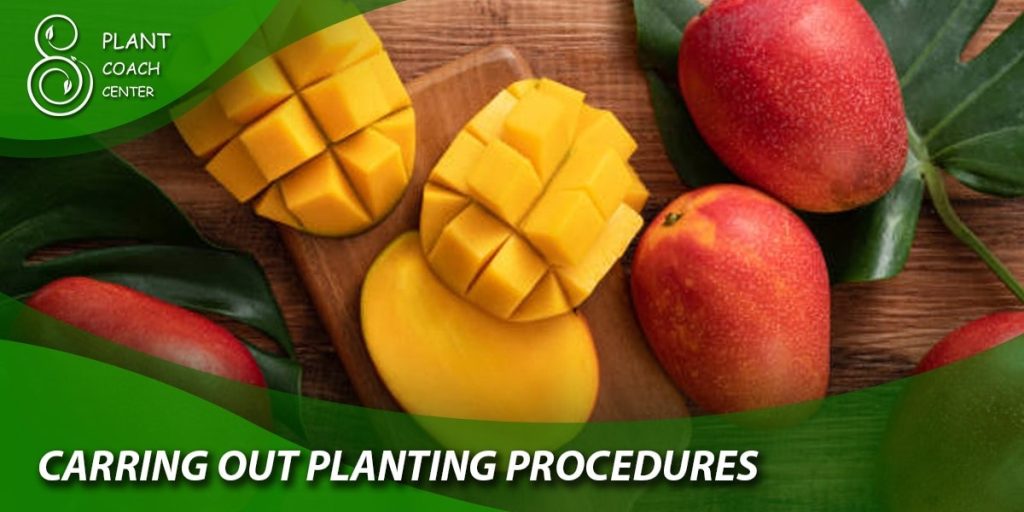
Planting mango seeds and nurturing them into healthy seedlings is a rewarding endeavor that allows you to witness the growth of these magnificent trees from the very beginning. By understanding the anatomy of mango seeds, preparing them properly, considering the environmental factors, and following the step-by-step planting process, you can increase the chances of successful germination and growth.
Remember to provide adequate care to the mango seedlings, including regular watering, fertilization, and pest management. With patience and proper attention, your mango seedlings will flourish and eventually reward you with delicious fruits.
For more in-depth information and resources on planting mango seeds and various other plant-related topics, be sure to visit PlantCoachCenter.com, your go-to online resource for expert plant care advice and gardening tips.


